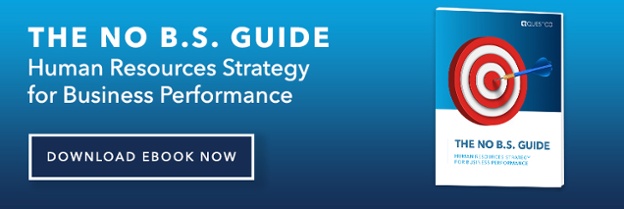.jpg)
The decision to bring employees back must be carefully weighed, since there is still a possibility of infections spreading through many environments. The goal is to limit the ability of the virus to disrupt normal work functions or employee safety. Before transitioning employees back into the work environment, consider these four crucial tips.
1. Survey Your People
Before requiring or pressuring employees to come back to work, see how they're feeling about it. Many employees may not yet be comfortable coming back. Others may not have the ability to return yet: while schools are expected to reopen on time in some areas of the country, parents may not have childcare in the meantime or may not feel comfortable sending the kids to school yet.
Ask your employees where they stand on coming back to work and what precautions they need to feel confident about that return. Consider such elements as tools that your employees might need to access in the physical office or the ability to conduct in-person meetings. Keep in mind that if employees aren't ready to return, morale and performance may suffer.
2. Hold Employee Welfare Paramount
You, as the employer, are responsible for providing a safe workplace--and you must take whatever steps are necessary to provide it. Weigh every decision with each individual employee's health in mind. Avoid any unnecessary risks. Consider:
- What steps do you need to take to keep employees safe in the workplace?
- What measures can you take to improve both employee confidence and employee safety?
- What risks exist to your employees, and how can you mitigate them?
Wearing masks or installing plexiglass dividers is a critical first step, but it's also not the only step that you, as an employer, should take. Before reopening your workplace, make sure you have measures in place that will protect your employees as much as possible.
3. Weigh the Costs of Opening Safely
Carefully consider what opening safely could cost--and what you'll need to put in place in order to make it happen. Do you need to stagger shifts, including shifting arrival and dismissal times? Can you keep your office open, but only partially occupied? What steps do you need to take to keep your employees as safe as possible?
You'll need to invest time in planning. Carefully consider the logistics of social distancing: can your employees operate safely while maintaining appropriate distancing in your office environment? What does cleaning the office look like? Who will be responsible for taking on that task? How will you handle mask supply? What do you need to do to install the proper modifications or equipment before your employees return to the office? For many employers, opening safely will cost more than simply allowing employees to continue working or operating from home.
4. Consult HR Professionals Before Requiring Employees to Return
It's essential to have expert HR guidance before opening your doors back up. Not only must you take into consideration the current needs of your employees; you must consider what other elements will continue to impact employees' ability to come into the office.
For example, employees must be offered FMLA to cover the need to care for sick children or to provide care for children when they cannot attend their usual childcare alternative. You must also consider what elements you need to put in place to deal with a potential outbreak in your workplace, including how to inform those who may have been exposed.
By taking the right steps now, you can protect both your employees and your business as you continue to weather this crisis.
The legal landscape is shifting quickly as it relates to COVID-19. Need to know more about dealing with COVID-19 in the workplace? Check out our other COVID-19 resources.



